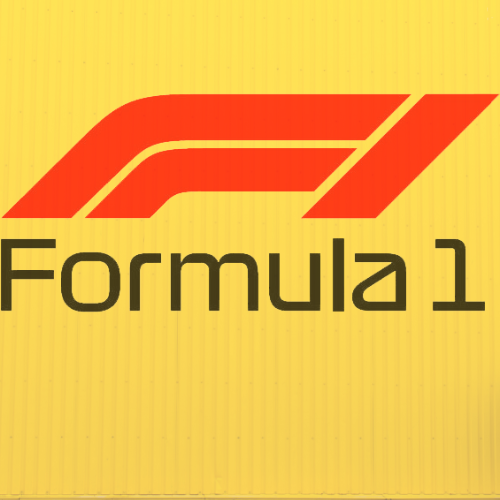F1 Formula Racing is the highest class of international open-wheel car racing. It is a team sport where each team designs and builds their own car, which is driven by two drivers who compete to be the fastest and win the race. The F1 weekend format typically consists of three practice sessions, a qualifying session to determine the starting grid order, and the main race.
Some races also feature a shorter “sprint” race on the Saturday that sets the grid for the main Sunday race. F1 cars are highly advanced, using the world’s most efficient engines and cutting-edge technology to achieve incredible speeds of over 370 km/h (230 mph). The sport is known for the extreme g-forces the drivers experience and the split-second decisions they must make at those speeds. F1 is a truly global sport, with 24 races held across 5 continents in 2023. The races take place on a variety of circuit types, including purpose-built tracks, street circuits through cities, and historic racing venues.
Winning an F1 race is considered one of the highest achievements in motorsport. The sport is governed by the Fédération Internationale de l’Automobile (FIA), which sets the technical and sporting regulations for the cars and races. Drivers and constructors compete for separate world championships over the course of the season. In summary, F1 is the pinnacle of open-wheel, single-seater motorsport, featuring the fastest and most technologically advanced racing cars in the world, driven by the best drivers, and competed at the highest level globally.
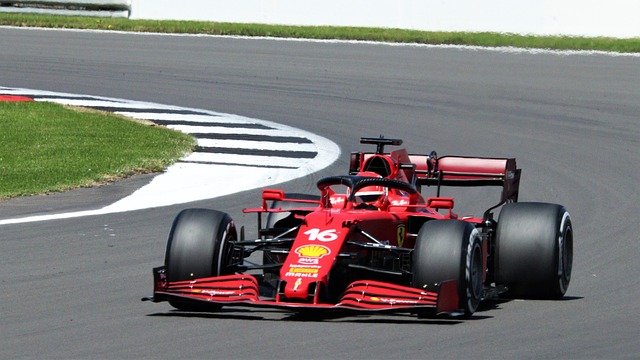

What are the Rules and Regulations of F1 Formula Racing
The rules and regulations of Formula 1 racing cover various aspects that govern the sport, ensuring fairness, safety, and competitiveness. Here are some key points based on the provided sources:
Technical Regulations
- F1 cars have specific size restrictions, with a maximum width of 200 cm and height of 95 cm. The weight of the car and driver combined must be at least 798 kg as of 2023
- The chassis must meet safety standards, including crash tests for front and rear impacts, roll structures, and roll hoop specifications.
Sporting Regulations
- The FIA organizes the FIA Formula One World Championship, which includes titles for drivers and constructors. All parties involved must adhere to the rules governing the Championship and hold appropriate FIA Licenses.
- Changes to regulations may be implemented for safety reasons without notice or delay.
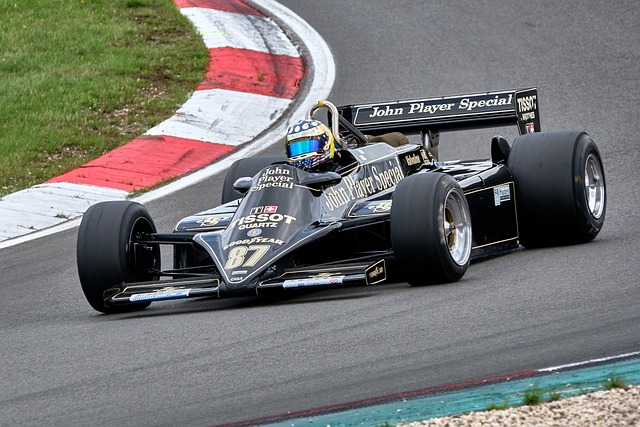
Race Format
- F1 weekends typically include practice sessions, a qualifying session to determine the starting grid, and the main race. Some races also feature a sprint race format on Saturdays
- The Sprint Qualifying format has seen changes in 2024, with the Sprint Qualifying moving to Friday, followed by the 100km Sprint on Saturday before the main race qualifying
DRS Activation
The DRS (Drag Reduction System) activation for the race has been adjusted to one lap instead of two laps after the start or restart following a Safety Car period.
Appeals and Fines
Teams have a limited window to lodge appeals, reduced to four days with a potential 24-hour extension in special circumstances. The fines for rule violations have significantly increased in 2024.
Promotional Events
- Teams can conduct promotional events with current cars, allowing for more mileage and footage capture. There are specific regulations regarding the use of older cars for testing purposes.
These regulations and changes ensure the integrity, safety, and excitement of Formula 1 racing, shaping the competitive landscape of the sport while maintaining high standards of performance and fairness.
How are F1 cars different from other Racing cars
There are many features on which we can differentiate F 1 Cars from other Race cars. These are given as follows,
Weight and Speed
- Formula 1 cars are lighter than other race cars, weighing around 796 kg, which contributes to their agility and speed.
- F1 cars are known for their exceptional top speeds, with records reaching over 370 km/h (230 mph).
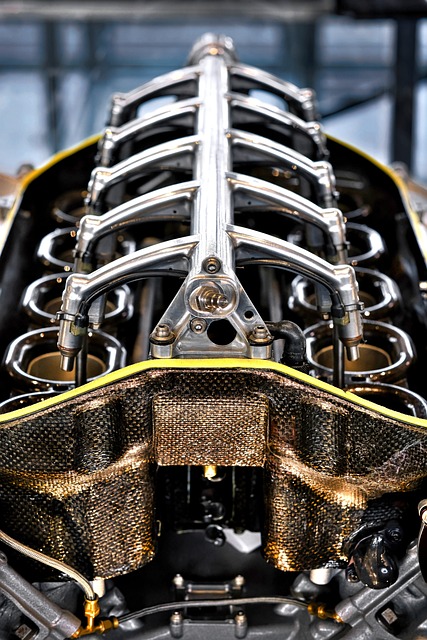
Aerodynamic Design
- F1 cars have strict regulations governing aerodynamic design, specifying areas where engineers have design freedom and restrictions to ensure fair competition.
- The aerodynamics of F1 cars play a crucial role in generating down force, allowing them to corner at high speeds and maintain stability
Powertrain
- Since 2014, all F1 cars have used 1.6-litre V6 turbo engines combined with a hybrid electrical system, producing around 1000bhp
- The powertrain of F1 cars is finely tuned to balance power output, fuel efficiency, and hybrid technology for optimal performance
Race Tracks
- F1 races are predominantly held on purpose-built road courses, with some street tracks included in the calendar to add variety and challenge
- The tracks where F1 races take place are designed to test the limits of both the cars and drivers, featuring a mix of high-speed straights and technical corners
Technology and Innovation
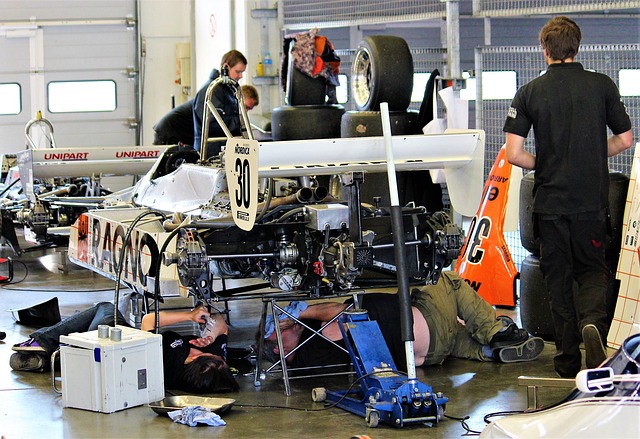
- Formula 1 cars are at the forefront of technological innovation in motorsport, with regulations evolving periodically to keep the technology relevant and competitive
- .The constant pursuit of technological advancements in F1 drives teams to push the boundaries of engineering and performance in the sport
.In summary, Formula 1 cars stand out from other race cars due to their lightweight construction, aerodynamic design, powerful yet efficient powertrains, focus on high-speed performance, and continuous technological advancements that set them apart as the pinnacle of motorsport engineering
What is the History of F1 Formula Racing

The origins of Formula 1 can be traced back to the early 20th century, with pioneering road races in France in the 1890s and the early development of Grand Prix racing. Some key events and milestones in the history of F1 include:
- The first “Grand Prix” race was held in 1901 at Le Mans, France, won by Ferencz Szisz in a Renault
- The 1906 French Grand Prix was a landmark event, organized to showcase the French automobile industry
- In the 1920s, manufacturers like Bugatti and Fiat introduced innovations like superchargers, while American driver Jimmy Murphy won the 1921 French Grand Prix in a Duesenberg.
- The International Grand Prix Championship, the first international drivers’ championship, was formed in 1931.
- After World War II, European passion for motor racing was rekindled, and the Fédération Internationale de l’Automobile (FIA) officially established the Formula One World Championship in 1950
The inaugural 1950 season saw just 7 races held in Europe, with Italian driver Giuseppe Farina winning the championship for Alfa Romeo. Over the decades, F1 evolved rapidly, with the introduction of turbocharged engines in the 1970s, the rise of legendary drivers like Niki Lauda and Ayrton Senna, and the sport’s increasing global reach and technological complexity.
Today, Formula 1 is the highest class of international open-wheel racing, featuring the fastest and most technologically advanced cars, driven by the best drivers, and competed at the highest level globally.
Who were some of the most Famous F1 Formula Racing drivers in History
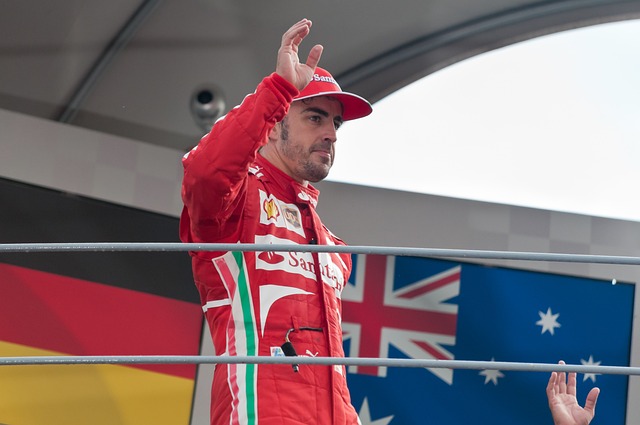
Some of the most famous F1 drivers in history include:
Juan Manuel Fangio:
Known for his dominance in the 1950s, Fangio won five World Drivers’ Championships and is considered one of the greatest drivers in F1 history
Ayrton Senna:
A Brazilian driver who is widely regarded as one of the greatest drivers in F1 history, Senna won three World Drivers’ Championships and is remembered for his intense rivalry with Alain Prost
Michael Schumacher:
A German driver who holds the record for the most World Drivers’ Championships (7) and the most Grand Prix wins (91), Schumacher is widely considered one of the greatest drivers in F1 history
Niki Lauda:
An Austrian driver who won three World Drivers’ Championships and is known for his incredible comeback after a near-fatal crash in 1976, Lauda is a legendary figure in F.
Alain Prost:
A French driver who won four World Drivers’ Championships, Prost is known for his smooth racing style and his intense rivalry with Ayrton Senna
Jackie Stewart:
A Scottish driver who won three World Drivers’ Championships, Stewart is a three-time F1 World Champion and is known for his safety advocacy in the sport
Jim Clark:
A British driver who won two World Drivers’ Championships, Clark is considered one of the greatest drivers in F1 history, known for his exceptional skill and versatility
Stirling Moss:
A British driver who won 16 Grands Prix, Moss is a legendary figure in F1, known for his daring and aggressive driving style.
Graham Hill:
A British driver who won two World Drivers’ Championships, Hill is a two-time F1 World Champion and is known for his versatility and ability to adapt to different cars.
Sebastian Vettel:
A German driver who has won four World Drivers’ Championships, Vettel is one of the most successful drivers in F1 history, known for his consistency and ability to adapt to different cars.
These drivers have left an indelible mark on the sport, with their achievements and personalities captivating audiences worldwide.

What is F2 Formula Racing ?
The FIA Formula 2 Championship is the second tier of single-seater open-wheel racing, designed to create a clear path for drivers from karting to Formula 1. It is the direct feeder series to Formula 1, with many drivers using F2 as a stepping stone to the top level of motorsport. The key details about F2 racing are:
Car Specifications
- F2 cars are designed to be slightly slower than F1 cars, but still highly advanced, with the latest safety and performance technology .
- All teams use the same Dallara F2 2018 chassis, powered by a Mecachrome engine, and fitted with Pirelli tires
- This one-make format ensures the focus is on driver talent rather than car development
Race Format
- F2 races are held as support events to Formula 1 Grand Prix weekends, with two races per round.
- The format includes practice sessions, qualifying, a sprint race, and a feature race
- Points are awarded for finishing positions, pole positions, and fastest laps in both races
Drivers and Teams
- The championship features 22 drivers competing for 11 teams, all of which are independent of F1 teams.
- Drivers use F2 as a stepping stone to progress to Formula 1, with recent graduates including Charles Leclerc, George Russell, and Oscar Piastri.
History and Evolution
.
- F2 was revived by the FIA in 2017, replacing the previous GP2 series as the primary feeder championship
- The series has undergone several changes, including the introduction of the Dallara F2 2018 chassis and the current race format
- The 2024 season will see further updates to the cars, aligning them more closely with the latest F1 technology and sustainability goals.
In summary, the FIA Formula 2 Championship is a crucial part of the motorsport ladder, providing young drivers with a highly competitive and technologically advanced platform to showcase their skills and progress towards the pinnacle of open-wheel racing – Formula 1.
.
What is the difference between Formula 2 and Formula 1 Racing
.
The main differences between Formula 2 (F2) and Formula 1 (F1) are:
.
Car Design
.
- In F2, all drivers use identical cars designed by Dallara Automobili, ensuring a level playing field where the focus is on driver talent rather than car development. .
- In contrast, F1 teams have the freedom to design and develop their own cars, including the chassis, engines, and aerodynamics, leading to a wider variety of car models and manufacturers
.
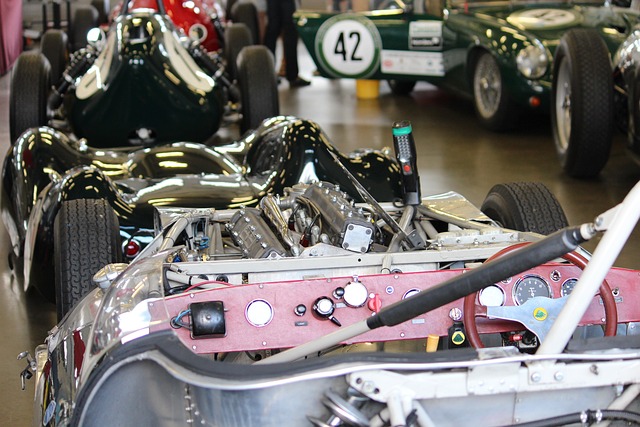
.
Cost and Technology
.
- Participating in an F2 event costs significantly less, around 1/10th of the cost of participating in an F1 race, making it a more accessible option for drivers looking to progress in motorsport
- F2 cars have half the horsepower of F1 cars but still achieve comparable top speeds, highlighting the efficiency and performance of these cars despite the power difference
.
Race Format
.
- F2 race weekends include practice sessions, a single qualifying session, a feature race, and a sprint race, with the top 8 finishers of the feature race having their positions reversed for the sprint race
- F1 race weekends consist of practice sessions, a qualifying session to determine the starting grid for the main race, and the main race itself, with points awarded based on finishing positions and fastest laps.
.
Regulations
.
- F2 is a one-make championship with strict regulations governing the cars, ensuring parity among all drivers and teams.
- F1 allows for more design freedom, leading to greater diversity in car design and technology among the teams competing in the championship.
In summary, Formula 2 serves as a feeder series to Formula 1, providing a platform for young drivers to showcase their skills in a competitive and cost-effective environment, while Formula 1 represents the pinnacle of motorsport with teams developing their own cutting-edge technology and competing at the highest level globally.
.
Who are some of the most successful Formula 2 drivers of all Time
.
Some of the most successful Formula 2 drivers of all time include:
Theo Pourchaire:
A talented driver who has shown great potential in Formula 2, with a strong performance that has earned him recognition as one of the top drivers in the series.
Enzo Fittipaldi:
Another promising driver who has achieved success in Formula 2, showcasing his skills and improving year after year to establish himself as a competitive force in the championship.
Frederik Vesti:
A driver who has demonstrated his capabilities in Formula 2, consistently performing well and making a name for himself in the competitive field of drivers.
.Ayumu Iwasa:
Known for his impressive performances in Formula 2, Iwasa has shown skill and determination on the track, earning recognition as one of the top drivers in the series.
.Dennis Hauger:
A driver who has made a mark in Formula 2 with his strong performances and competitive spirit, showcasing his talent and potential in the series.
.These drivers have excelled in Formula 2, demonstrating their skills, consistency, and determination on the track, making them some of the most successful drivers in the history.
.
What is F3 Formula Racing
.
Formula 3, also known as F3, is a third-tier class of open-wheel formula racing that serves as an essential stepping stone for many prospective Formula One drivers. The championship is recognized for its role in nurturing young talent and providing a platform for drivers to showcase their skills and progress towards higher levels of motorsport competition.
.
Car Specifications
.
Chassis:
F3 cars feature monocoque chassis with slick racing tires and wings, with Dallara being the primary manufacturer of F3 cars, although other manufacturers like Mygale, Lola,
Engines:
FIA Formula 3 cars are equipped with 3.4-liter, 6-cylinder naturally aspirated spec engines, while engines in other Formula 3 series are built from production model blocks, often sealed by race organizers to prevent private tuning
Performance:
F3 cars have a minimum weight of 550 kg, use sequential paddle-shift gearboxes, and are rear-wheel drive with a maximum of six forward gears and one reverse
.
Race Format
.
- F3 race weekends typically include practice sessions, qualifying, a sprint race, and a feature race, with points awarded based on finishing positions, pole positions, and fastest laps in both races
- The championship offers a secondary class for older cars to provide a cost-effective entry point for lesser-funded teams and drivers, promoting participation and competition in the series.
.
History and Evolution
.
- Formula 3 has evolved significantly over the years, with chassis becoming more sophisticated and carbon fiber structures being introduced in the mid-1980s, enhancing safety and performance
- Dallara emerged as a dominant chassis manufacturer in the 1990s, with their F3 cars becoming a prerequisite for competitiveness, leading to their widespread adoption in the series
- The championship has continued to adapt and innovate, with regular updates to the chassis and regulations to keep the competition fierce and relevant in the ever-changing landscape of motorsport.
In summary, Formula 3 plays a vital role in developing young drivers, providing them with a competitive platform to hone their skills and progress towards higher levels of racing, making it an essential component of the motorsport ladder system.
.
What is the difference between Formula 3 and Formula 2 Racing
.
the key differences between Formula 3 (F3) and Formula 2 (F2) racing are:
.
Car Specifications
.
- F3 cars weigh around 550 kg with the driver, while F2 cars weigh 755 kg with the driver
- F3 cars have a maximum speed of 300 km/h, while F2 cars can reach up to 335 km/h
- F3 cars use a 3.4-liter Mecachrome engine producing around 380 hp, while F2 cars use a 3.4-liter turbocharged V6 Mecachrome engine producing 620 hp
.
Racing Format
.
- Both F3 and F2 have a similar race weekend format, with practice, qualifying, a sprint race, and a feature race
- However, the F3 sprint race is 40 minutes long, while the F2 sprint race is 120 km or 45 minutes
.
Grid Size
.
- F3 has a larger grid size, with 10 teams and 3 drivers per team, resulting in a total of 30 drivers .
- F2 has a smaller grid size, with 11 teams and 2 drivers per team, resulting in a total of 22 drivers
.
Scoring System
.
- The points allocation for the sprint and feature races is the same in both F3 and F2, with the winner of the feature race receiving 25 points.
In summary, while both F3 and F2 are feeder series to Formula 1, F2 cars are more powerful, faster, and heavier than F3 cars, reflecting the progression in performance and technology as drivers move up the motorsport ladder.
.
What are the Rules and Regulations for Formula 3 Racing
.
the key rules and regulations for Formula 3 (F3) racing are:
.
Car Specifications
.
- All F3 cars must conform to the technical regulations set by the FIA, using a Dallara chassis and a 3.4-liter Mecachrome engine producing around 380-400 hp
- Each competitor is allowed a maximum of 3 cars, and no spare cars are eligible for the championship.
.
Race Format
.
- F3 race weekends consist of a practice session, a qualifying session, a sprint race, and a feature race
- . The sprint race is 40 minutes plus 1 lap, while the feature race is 45 minutes plus 1 lap
- The starting grid for the feature race is determined by the results of the qualifying session, with the top 10 positions reversed
.
Scoring System
.
- Drivers are awarded points for their finishing positions in the sprint and feature races, with the winner of the feature race receiving 25 points.
Additional points are awarded for pole position (2 points) and the fastest lap in the top 10 (1 point).
.
Licensing and Eligibility
.
- Drivers must hold a Grade A or B International FIA License to participate in the F3 championship
- Competitors must also hold valid licenses and authorizations issued by their ASNs (National Sporting Authorities).
.
Safety and Regulations
.
- The FIA has strict safety regulations in place, including mandatory on-board cameras and the use of a single tire compound per event
- The FIA Formula 3 Sporting Regulations detail all aspects of the championship, from the organization and insurance to the driving conduct and post-race procedures
.These rules and regulations ensure a level playing field, promote driver development, and maintain the high standards of safety and competitiveness in the FIA Formula 3 Championship.
.
Who are some of the most successful Formula 3 drivers of all Time
.
some of the most successful Formula 3 drivers of all time include:
Stirling Moss:
While not the most successful in terms of championships, Moss is considered one of the greatest Formula 3 drivers, known for his intense rivalry with driver Ivor Parker and his ability to beat more experienced drivers
Ivor Parker:
Described as “the most successful Formula 3 driver in history”, Parker won a total of 126 F3 races, and was the Formula 3 Champion in 1952, 1953, and 1959
Jim Clark:
The legendary Scottish driver won the British Formula 3 Championship in 1964 before going on to become a two-time Formula 1 World Champion
.Ayrton Senna:
The iconic Brazilian driver honed his skills in Formula 3, winning the British Formula 3 Championship in 1983 before making the leap to Formula 1
.Michael Schumacher:
The seven-time Formula 1 World Champion also had success in Formula 3, winning the German Formula 3 Championship in 1990 before progressing to Formula 1
.Mika Häkkinen:
The Finnish driver won the Formula 3 Intercontinental Cup in 1990 before becoming a two-time Formula 1 World Champion
These drivers, among others, have left a lasting legacy in Formula 3 racing, using the series as a crucial stepping stone to reach the pinnacle of motorsport – Formula 1
Who is Andrea Kimi Antonelli – and why is he such a hot topic in the Miami Paddock?

Andrea Kimi Antonelli is a young Italian driver who has garnered significant attention in the Formula 1 paddock due to his exceptional talent and potential. Many insiders regard him as the next Max Verstappen, highlighting his promising future in motorsport. Andrea Kimi Antonelli has recently made headlines for his impressive performance and the buzz surrounding his potential as a future star in Formula 1.
What is Andrea Kimi Antonelli’s background in Racing.
Andrea Kimi Antonelli’s background in racing is quite impressive and showcases his talent and success from a young age. He started racing at the age of 7 and has achieved remarkable results throughout his career. Here is a summary of his racing background based on the provided sources:
2023 Formula Regional European Championship by Alpine (PREMA Racing) – Champion:
Antonelli won the Formula Regional European Championship by Alpine in 2023 with 5 wins, 11 podiums, 4 pole positions, and 5 fastest laps
.2023 Formula Regional Middle East Championship – Champion:
He also clinched the Formula Regional Middle East Championship title in 2023 with 5 wins, 11 podiums, 4 pole positions, and 5 fastest laps
2022 Italian Formula 4 Championship (PREMA Racing) – Champion:
Antonelli was the champion of the Italian Formula 4 Championship in 2022, securing 11 wins, 13 podiums, 13 pole positions, and 12 fastest laps
2022 ADAC Formula 4 Championship (PREMA Racing) – Champion:
He also won the ADAC Formula 4 Championship in 2022 with 9 wins, 12 podiums, 7 pole positions, and 8 fastest laps
Previous Achievements:
Antonelli has a long list of accomplishments in karting, including victories in various championships like the WSK Super Master Series, WSK Euro Series, and FIA World Championship in different categories
Overall, Andrea Kimi Antonelli has a stellar racing background, marked by multiple championship titles and impressive performances across different series, showcasing his exceptional talent and potential as a rising star in motorsport.

what is the significance of Andrea Kami Antonelli’s performance in Formula 2.
Andrea Kimi Antonelli’s performance in Formula 2 is significant due to his exceptional talent and rapid progression through the motorsport ranks. Despite being only 17 years old, Antonelli has already made a strong impression in Formula 2, showcasing his skills and potential as a future star in motorsport.
His performance in Formula 2 has attracted attention from top teams like Mercedes, with Toto Wolff acknowledging his promising talent and considering him as a potential candidate for a seat in Formula 1. Antonelli’s success in Formula 2 highlights his ability to adapt quickly to new challenges and compete at a high level, setting the stage for a promising career in motorsport.
What are some of the challenges Andrea Kimi Antonelli has faced in his transition to Formula 2?
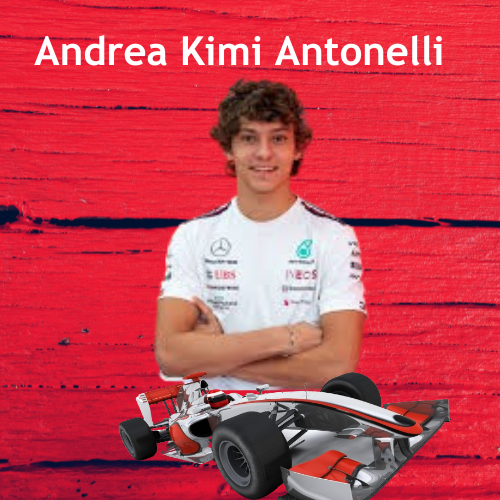
Andrea Kimi Antonelli has faced several challenges in his transition to Formula 2, despite his remarkable talent and success in junior series. Some of the challenges he has encountered include:
Steep Learning Curve:
Transitioning from lower-tier series to Formula 2 presents a significant learning curve due to the increased speed, competition, and technical complexity of the cars in F2
Limited Experience:
Antonelli’s limited experience in Formula 2, having only completed three rounds, puts him at a disadvantage compared to more seasoned drivers who have more familiarity with the cars and tracks in the championship
.Pressure and Expectations:
Being identified as a potential candidate for a Formula 1 seat at a young age can bring added pressure and expectations, requiring Antonelli to perform consistently and adapt quickly to the demands of Formula 2
.Competitive Field:
Formula 2 is known for its competitive field of drivers, many of whom have more experience and track time in the series, posing a challenge for Antonelli to establish himself and compete at the highest level.
Despite these challenges, Andrea Kimi Antonelli has shown resilience, determination, and promising potential in Formula 2, demonstrating his ability to overcome obstacles and make a mark in the highly competitive world of motorsport.
